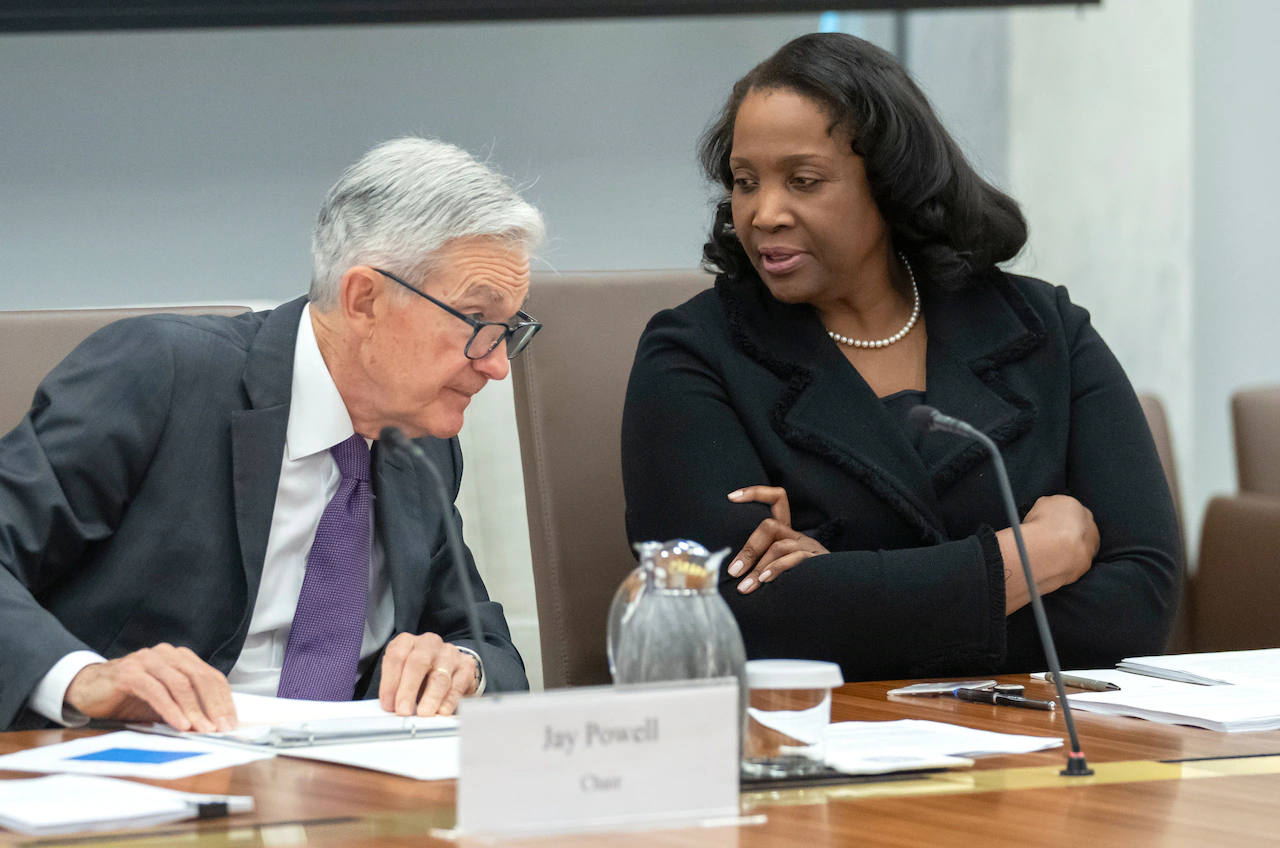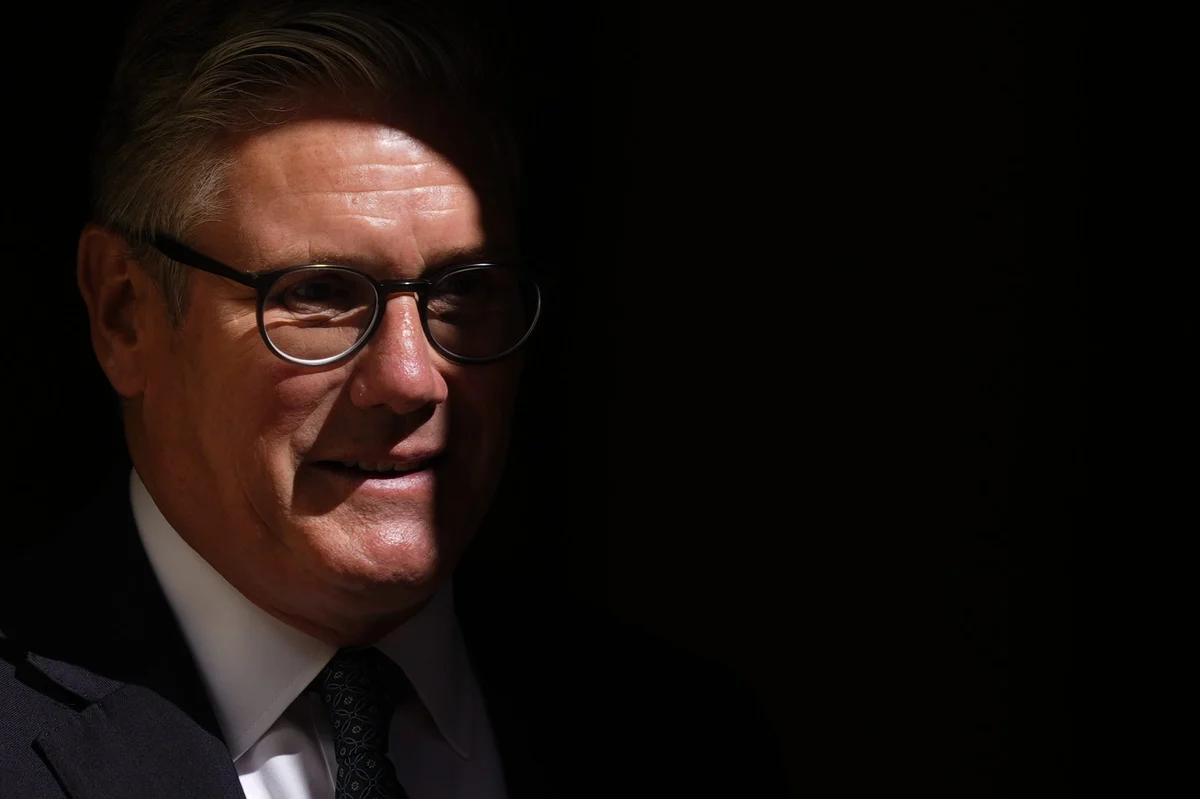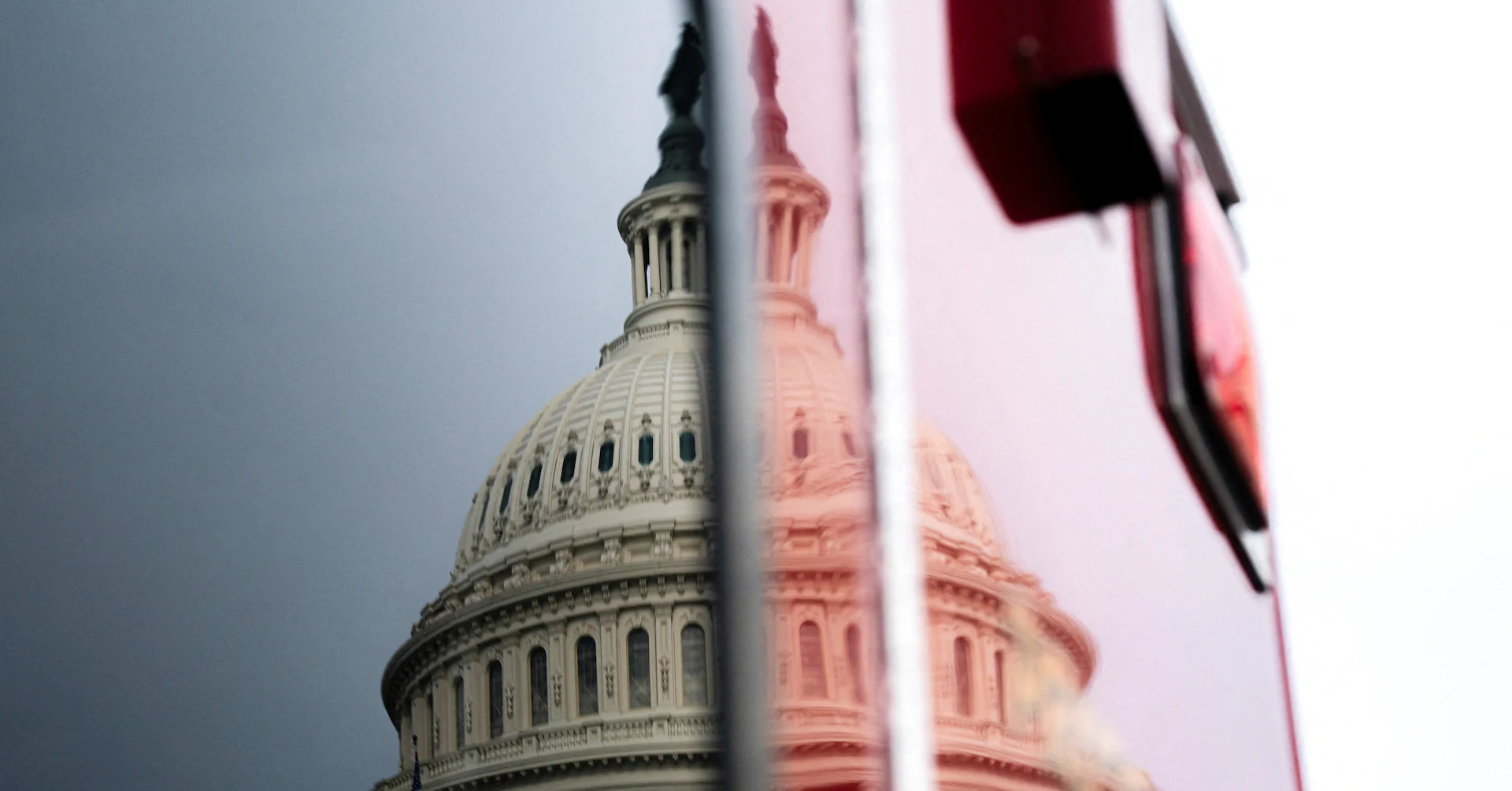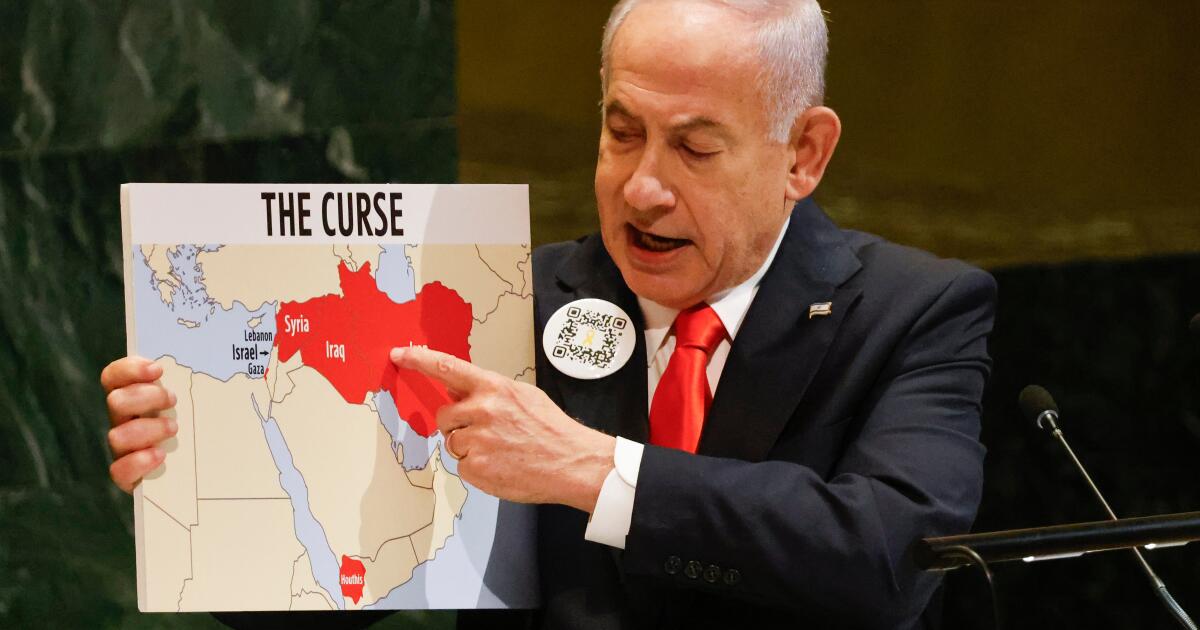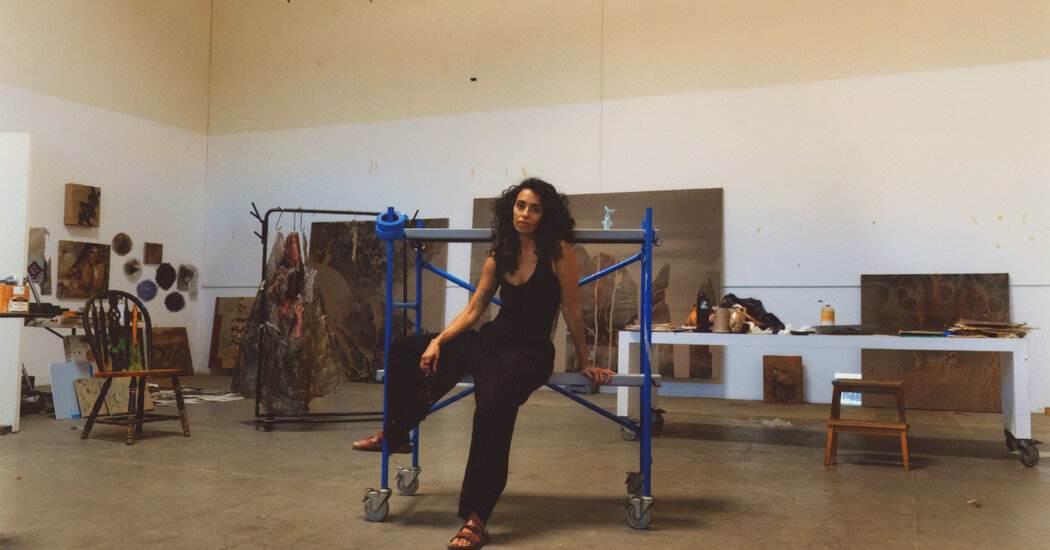
The painter Hayv Kahraman returned to her bungalow in Altadena, Los Angeles in January, while the Eaton wildfires were still raging, to check on the damage. At one point, a helicopter flew at a low altitude over her block to douse the flames. While her neighbors clapped and cheered in gratitude, Kahraman ran for cover.
Her reaction was sparked by childhood memories of Baghdad, when approaching helicopters raised fears of impending American bombs.
Kahraman (her first name rhymes with Dave) was only 10 years old when she fled Iraq with her mother and sister in 1991, a few months into Operation Desert Storm. They sought asylum in Sweden after a circuitous journey arranged by a smuggler with stops in Saudi Arabia, Yemen, Addis Ababa, Ethiopia; and Frankfurt, Germany. She moved to Italy as a young adult, and then to the United States.
Since she began her career as an artist in the mid-2000s — she is self-taught — her paintings have alluded to the effects of these displacements. But having to flee her home again — this time not forced out by war but by environmental disaster — has put a distinct spin on those longstanding themes. The results of those multiple dislocations are now on view in her Manhattan exhibition, “Ghost Fires,” at the Jack Shainman Gallery in Chelsea, through Oct. 25.
“The wildfires and the memories they triggered put me into a deep depression,” she said in an interview in her current work space in West Covina, a Los Angeles suburb, in August. “After a few weeks, I finally came to the studio. My work usually involves a lot of preparing and thinking and sketching, but now I just picked up a brush. After about 30 minutes a door opened in my brain — every time I put down a brushstroke, I remembered more and more about who I was.”
“My work has always been about trauma,” she said. “But in a very direct and visceral way, painting was actually healing me.”
“Ghost Fires” is filled with beautiful, often fierce-looking women with masses of unruly black hair, contorted into athletic poses in scorched, otherworldly surroundings. Even though they look more like mythical beings than real people, they sport geometrically patterned bathing suits, similar to the ones Kahraman wears when she takes the mirror selfies and videos she uses in lieu of painting from a live model.
In earlier work, Kahraman depicted her women with crisp outlines. She placed them against indeterminate backgrounds as if floating and spinning in space. Sometimes their bodies were barely visible, or half finished — shoulders, arms and face vanishing into the unprimed canvas. Their linear quality nodded to her brief training in graphic design when she lived in Italy, as well as to her varied art historical interests: the medieval Baghdad School of manuscript painting, Renaissance and Baroque drawing and etching, and Japanese Ukiyo-e prints.
But now, Kahraman’s brush is freer. Her women’s bodies are sinewy, more fully defined and three-dimensional, their faces more expressive. “The looseness that you’re seeing in the new work is because my connection with my body has shifted,” she said. “Trauma dissociates you from your body, and this healing process has allowed me to regain that.”
After her 2022 move to Altadena, nestled in the foothills of the San Gabriel Mountains, she began incorporating techniques — including marbling, created by dipping her canvas into a large, purpose-built vat in her studio and creating a lacy but resilient fabric out of flax fibers that she appliqués onto her canvases — that suggested mountains and craters. “I think buying a home was sort of an anchor for me, as someone whose life has been very nomadic,” she said.
That house is now uninhabitable — still standing but contaminated by chemicals and heavy metals. As we drove through her neighborhood, she recalled the previous times she had been forced from her home.
“Sometimes I think the earth is trying to expel me,” she said.
The migrant’s experience permeates all aspects of these paintings. Kahraman fixates on her subjects’ eyes — they are often left blank or depicted in the figures’ palms, like the hand of Fatima, a symbol popular in the Middle East and North Africa that is said to ward off bad fortune. Her fascination is linked to the constant surveillance that immigrants are subjected to.
The sheer elegance of Kahraman’s images belies her almost obsessive research process. Over the course of our interview, she discussed, with a great deal of fluency, botany, microbiology, malacology (the study of mollusks), psychoanalysis, the theorist Donna Haraway, history and contemporary politics in West Asia, and more.
Frauke Josenhans, curator of “The Foreign in Us,” Kahraman’s 2024 survey at the Moody Center for the Arts at Rice University, Houston, said: “The way she uses those references is subtle but insistent. It’s not the first thing you see.”
The works in “Ghost Fires” were all created after the Los Angeles wildfires. A recurring image in her new paintings is a phoenixlike bird from medieval Arab cosmology that rises from the ashes of a pyre. Some paintings, depicting women sweeping their hair on the ground conjuring rain clouds as they swirl dust into the air, refer to an ancient Sumerian ritual.
And then there are repeated portrayals of women removing their underpants to sit on flames. These characters derive from a parable told by her great-aunt in Iraqi Kurdistan that begins with a flea falling into a fire. After a series of beings — crow, palm tree, water buffalo, river — destroy themselves out of grief for the insect, the tale ends with a mythical Ur-mother who is so distraught at the carnage that she sits on a hot oven to destroy her womb, signaling the end of humanity.
It is a bizarre tale to tell a child, Kahraman conceded, but it fascinates her. “It speaks of this entanglement of every single creature living,” she said. “They’re all interconnected, and they are all affected by this flea, this pest.”
The flea is a stand-in for the immigrant, she said. “But really, this is a story about extinction, and the idea that the extinction of one thing can be a trigger event for all kinds of extinctions.”
In one of the biggest canvases in the show, measuring 6½ square feet, Kahraman transforms the oven from the story into a volcano; the woman’s expression is not grief but defiance, as if to say, “I’m not going anywhere.”
Kahraman said she’s trying hard not to decipher every element of her work for the viewer, and so all paintings but one in the show share a single title: “Untitled (To Be Titled).”
